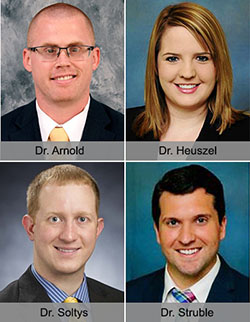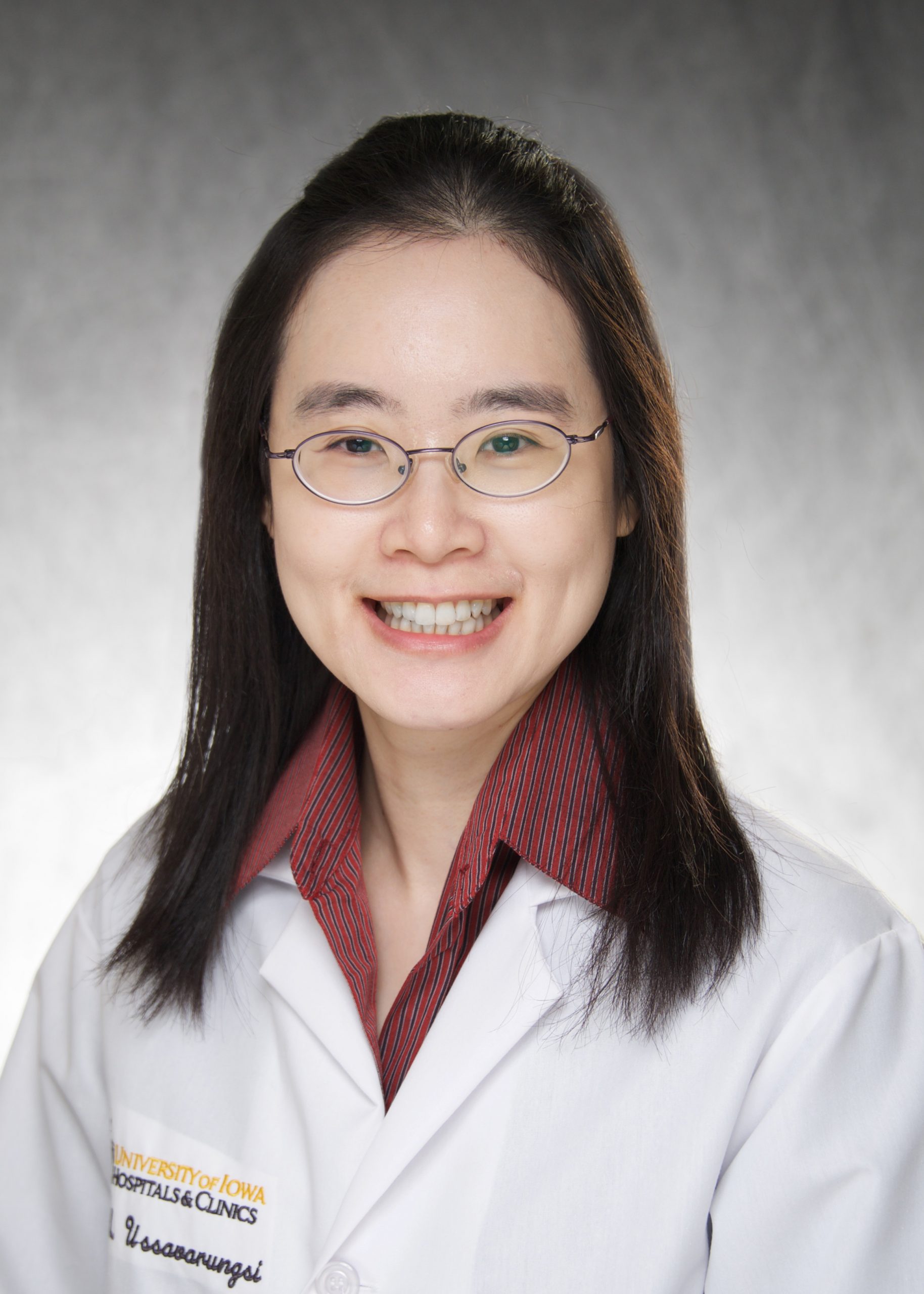The choice to pursue a career in academic medicine is not an easy one. Last weekend, I participated in the annual joint meeting of the Association of American Physicians, the American Society for Clinical Investigation and the American Physician Scientist Association. All of the keynote and presidential addresses independently, but passionately, spoke to the importance of strengthening the physician-scientist pipeline and also argued for the critical importance of working to increase diversity and inclusion in these ranks. I recognize that for those who elect this route, there are many transition points where the pipeline from medical school to tenured faculty member gets a bit leaky. The reasons for this are many and likely not mysterious to most readers, but suffice to say, I am thrilled when any one of our trainees stays in that pipeline and makes a commitment to rigorous scholarship and mentorship.
 This year, more of our second-year residents applied for the four positions as Chief Residents for the 2020-21 academic year than in almost any previous year. Slightly less than a third of that class so deeply believe in our training and academic mission that they applied to spend another year with us in, frankly, one of the toughest jobs in the department. That dedication and desire was evident in each of this year’s applicants as was their aptitude for the role. I know that Dr. Manish Suneja would agree with me that the choice was one of the most difficult we have faced. Each applicant should know how impressed the selection committee was with their preparedness and excellence. In the end, a choice was made and we are confident that these four will not only advance the department’s goals but inspire a new class of residents to similarly achieve. Congratulations to our new Chiefs and to the applicants who made our decision so challenging.
This year, more of our second-year residents applied for the four positions as Chief Residents for the 2020-21 academic year than in almost any previous year. Slightly less than a third of that class so deeply believe in our training and academic mission that they applied to spend another year with us in, frankly, one of the toughest jobs in the department. That dedication and desire was evident in each of this year’s applicants as was their aptitude for the role. I know that Dr. Manish Suneja would agree with me that the choice was one of the most difficult we have faced. Each applicant should know how impressed the selection committee was with their preparedness and excellence. In the end, a choice was made and we are confident that these four will not only advance the department’s goals but inspire a new class of residents to similarly achieve. Congratulations to our new Chiefs and to the applicants who made our decision so challenging.
Speaking of the pipeline, two separate events over the last few weeks very nicely demonstrate our cardiologists’ commitment to innovative approaches to mentorship. The first was a research retreat in which Dr. Kaiko Irani and the fellowship program organized a day-long series of presentations of ongoing research. Mostly first-year fellows, but some senior fellows and even a second-year resident, worked on their presentation skills and their ability to handle questions and incorporate feedback from faculty members. I like to see interactions that build relationships of trust but also ones where the trainee is nudged beyond their comfort limit, knowing they have the support and space to improve. The impressive results of that support was on display in last week’s Grand Rounds delivered by intern Dr. Giselle Statz and PGY-2 Dr. Noah Williford. The two residents carried the entire session  themselves and gave all attendees a well-reasoned and data-driven treatise on contemporary approaches to managing dyslipidemia and reducing cardiovascular risk. This is no easy feat for even the most seasoned of presenters and the two carried it off without breaking a sweat. My deepest congratulations to the two young physicians and their faculty mentors, Dr. Milena A. Gebska and Dr. Brian Olshansky.
themselves and gave all attendees a well-reasoned and data-driven treatise on contemporary approaches to managing dyslipidemia and reducing cardiovascular risk. This is no easy feat for even the most seasoned of presenters and the two carried it off without breaking a sweat. My deepest congratulations to the two young physicians and their faculty mentors, Dr. Milena A. Gebska and Dr. Brian Olshansky.
As members of an academic medical center we have a responsibility to educate. The advances we make in developing new procedures, refining therapeutic strategies, and providing access for our patients to clinical trials represent an important resource to regional providers. Conferences for continuing medical education, like the six listed here, provide opportunities for us to listen and connect with attendees and learn something new ourselves. The first conference on this list just occurred yesterday, but you can still register for the others. I would also like to point out two others not listed there. The first is the Precision Genomics Conference happening here on the UI Health Care campus on May 2. We would all do well to be aware of the conversation happening in the burgeoning field of precision and personalized medicine. As the field of medicine embraces this new knowledge, I believe it will refine the way that we manage a growing number of disorders. The other conference happening today and tomorrow at the Graduate Hotel in downtown Iowa City is the Americas Association of Sarcoidosis and Other Granulomatous Disorders (AASOG) Annual Meeting. This conference has brought investigators and clinicians from around the world to Iowa to discuss their discoveries around these challenging lung conditions. Organized by pulmonologist Dr. Alicia Gerke, in part with a grant from the NIH, the AASOG meeting being in Iowa City is a real feather in the university’s cap. Kudos to Dr. Gerke and her colleagues, and best wishes for today and tomorrow.
 I will conclude with another update from one of our divisions, this time from Infectious Diseases (ID). Dr. Daniel Diekema leads an extraordinarily productive division as evidenced by the robust fellowship program, the dramatic growth in their clinical services, and the deeply important work they conduct in the lab as well as in outcomes and epidemiology. Division faculty also play mission-critical roles in hospital quality and safety. Few other divisions are as broadly integrated into multidisciplinary activities as ID, from consults to collaborations. I encourage you to read about the great variety of work they conduct.
I will conclude with another update from one of our divisions, this time from Infectious Diseases (ID). Dr. Daniel Diekema leads an extraordinarily productive division as evidenced by the robust fellowship program, the dramatic growth in their clinical services, and the deeply important work they conduct in the lab as well as in outcomes and epidemiology. Division faculty also play mission-critical roles in hospital quality and safety. Few other divisions are as broadly integrated into multidisciplinary activities as ID, from consults to collaborations. I encourage you to read about the great variety of work they conduct.

